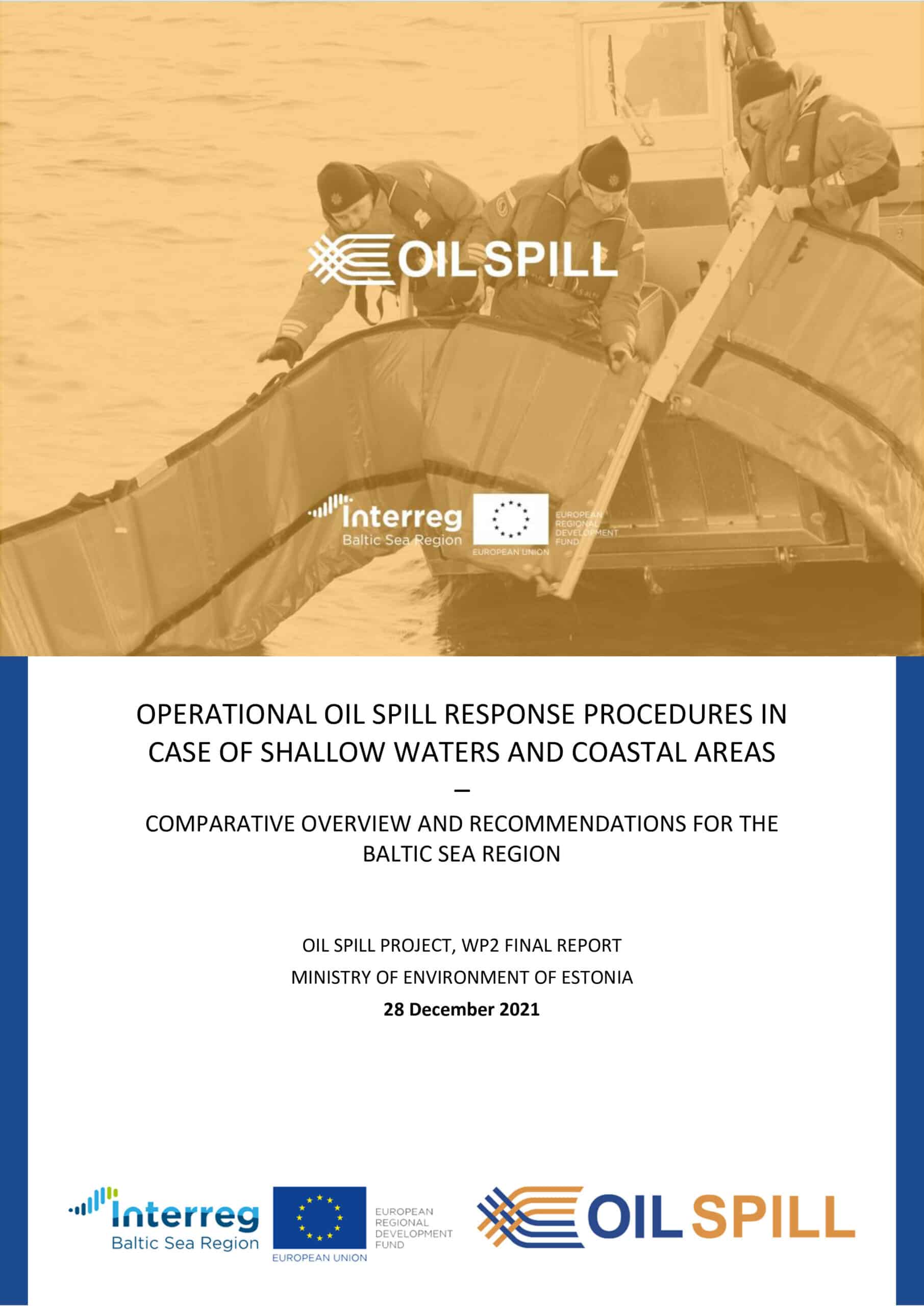OIL SPILL
Oil spill response in coastal areas needs more coordination
Combatting oil spills in shallow waters and coastal areas is often complicated. In contrast to the open sea, the division of tasks and responsibilities between competent authorities and other stakeholders such as non-governmental organisations (NGOs) is unclear near the coast. Most of the work involved in coastal oil spill response is an arduous, long-term operation. A strong capability to respond to oil spills with the help of volunteers is essential to achieving optimum results and minimising environmental harm.
More cooperation between authorities and volunteers
The project OIL SPILL intended to strengthen the oil spill response capability in the Baltic Sea region at the levels of key responsible ministries, operative competent authorities, key NGOs, relevant universities and the petrochemical industry. To address the challenge, the project enhanced cooperation structures, procedures, and skills between and within the relevant stakeholders. Together with universities, the partners identified procedures across borders that needed to be aligned, carried out trainings, and clarified key legal issues of cooperation in oil spills response schemes.
Budgets
in numbers
-
2.05MillionTotal
-
1.60MillionErdf
-
0.00MillionEni + Russia
-
0.00MillionNorway
Achievements
Mapping provides an overview and enables recommendations
The OIL SPILL project helped strengthen cooperation between competent authorities, NGOs, and volunteers in tackling oil spills in shallow and coastal waters of the Baltic Sea. As the project intended to identify and align administrative and other procedures in high-hazard environments, it mapped the operations in the partner countries. The operation practices had relevance to regulatory aspects, legislation; oil spill contingency plan and national contingency plan; response coordination; involvement of non-governmental organizations; rules of financing recovery and restoration; and best practices in financing preventive measures. Based on the mapping exercise, the project provided recommendations on what needs to be done to make the oil spill response faster and more efficient.
Oil spill response gets faster and more efficient
In addition, the involved public authorities had the possibility to actually improve their oil spill response operational practices. It was done thanks to the cross-border exchange of information and training. Besides, the project targeted NGOs and volunteers (e.g. the ones specialising in civil protection, fire and rescue services (voluntary firefighting brigades)) that improved their oil spill response capacity thanks to the provided exercises and closer collaboration with the responsible authorities. In training, the project used simulators in oil spill response. As an example, one of the largest oil spill response exercises was in Vellamo (Turku, Finland). SW Finland Emergency Services organised training where the exercise combined the activities of OIL SPILL, Host Nation Support, and SAAME, the annual OSR exercise at the Finnish Archipelago Sea. The exercise included rescue activities carried out by the responsible authorities and volunteers during a large-scale spill.
Outputs
Operational OIL SPILL response procedures in case of shallow waters and coastal areas

Live and tabletop exercises

Project Stories
Partners
University of Turku
- TownTurku
- RegionVarsinais-Suomi
- CountryFinland
- RepresentativeLauri Ojala
- Phone
- E-Mail
- Web
Ministry of Environment of Estonian Republic
- TownTallinn
- RegionPõhja-Eesti
- CountryEstonia
- RepresentativeAgni Kaldma
- Phone
- E-Mail
- Web
Southwest Finland Emergency Services
- TownTURKU
- RegionVarsinais-Suomi
- CountryFinland
- RepresentativeTorbjörn Lindström
- Phone
- E-Mail
- Web
Danish Civil Protection League
- TownHedehusene
- RegionKøbenhavns omegn
- CountryDenmark
- RepresentativeNiels Mørup
- Phone
- E-Mail
- Web
Finnish Red Cross
- TownHelsinki
- RegionVarsinais-Suomi
- CountryFinland
- RepresentativeLeena Kämäräinen
- Phone
- E-Mail
- Web
Tallinn University of Technology
- TownTallinn
- RegionPõhja-Eesti
- CountryEstonia
- RepresentativeDan Heering
- Phone
- E-Mail
- Web
"SUCCEEDED by PP14 (01.01.2019)" Fire and Rescue Board of Klaipeda County
- TownKlaipeda
- RegionKlaipėdos apskritis
- CountryLithuania
- RepresentativeMindaugas Kruopys
- Phone
- E-Mail
- Web
Östra Götaland Fire and Rescue Service
- TownNorrköping
- RegionÖstergötlands län
- CountrySweden
- RepresentativeUlf Lago
- Phone
- E-Mail
- Web
Lithuanian Red Cross Society
- TownKlaipeda
- RegionKlaipėdos apskritis
- CountryLithuania
- RepresentativeDalyte Fabijonaviciene
- Phone
- E-Mail
- Web
Klaipeda University
- TownKlaipėda
- RegionKlaipėdos apskritis
- CountryLithuania
- RepresentativeSergej Suzdalev
- Phone
- E-Mail
- Web
Neste Corporation
- TownEspoo
- RegionHelsinki-Uusimaa
- CountryFinland
- RepresentativeKimmo Vahanto
- Phone
- E-Mail
- Web
Finnish Environment Institute
- TownHelsinki
- RegionHelsinki-Uusimaa
- CountryFinland
- RepresentativeJorma Rytkönen
- Phone
- E-Mail
- Web
Latvian Maritime academy
- TownRiga
- RegionRīga
- CountryLatvia
- RepresentativeAndrejs Zvaigzne
- Phone
- E-Mail
- Web
Fire and Rescue Department of Lithuania
- TownVilnius
- RegionVilniaus apskritis
- CountryLithuania
- RepresentativeMindaugas Kruopys
- Phone
- E-Mail
- Web
-
Project managerJarmo MalmstenUniversity of Turku
-
Legal representativeJuuso TöyliUniversity of Turku
-
Financial managerSari TähtinenUniversity of Turku
-
Communication managerMinna-Liina OjalaUniversity of Turku



